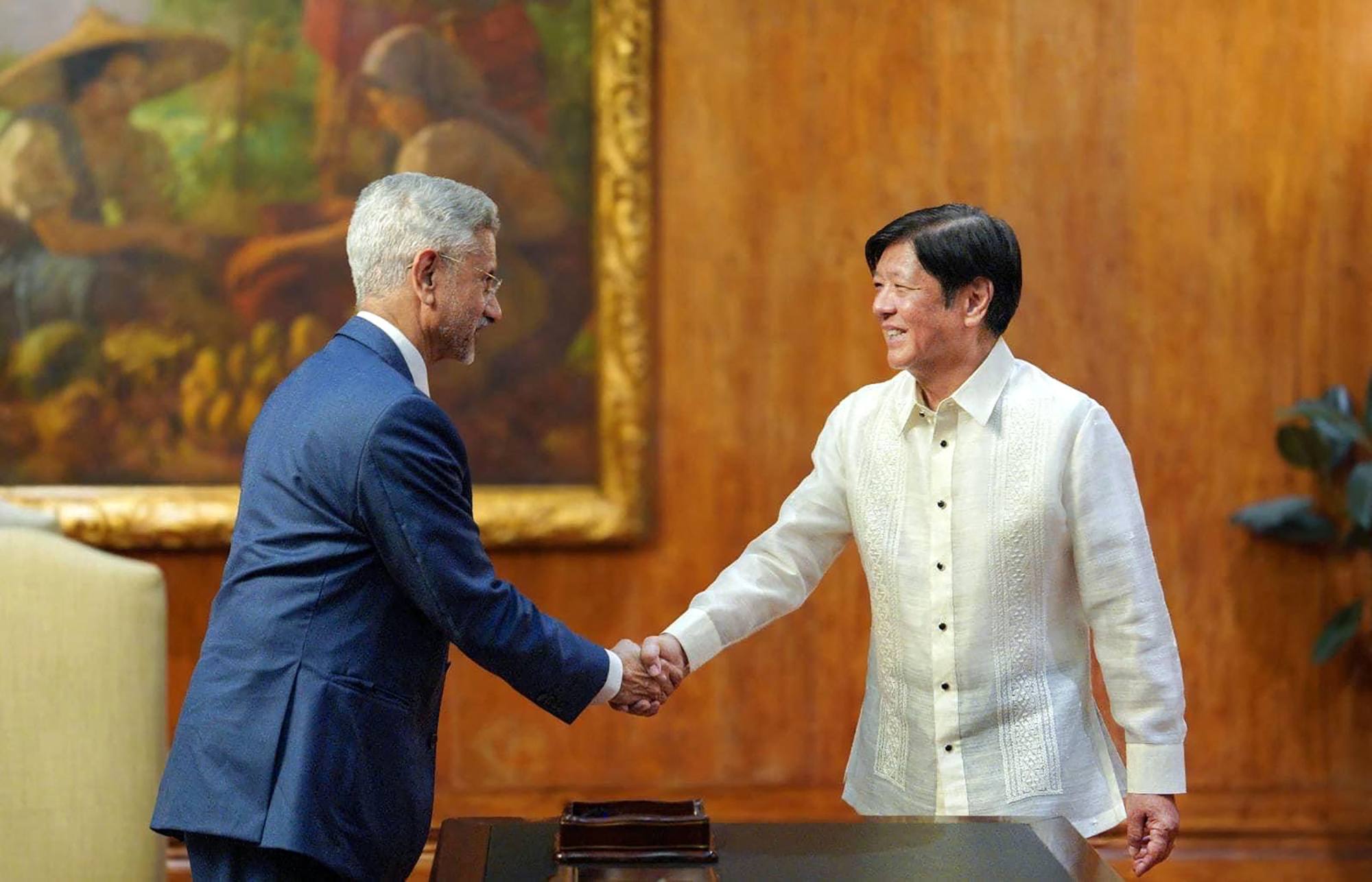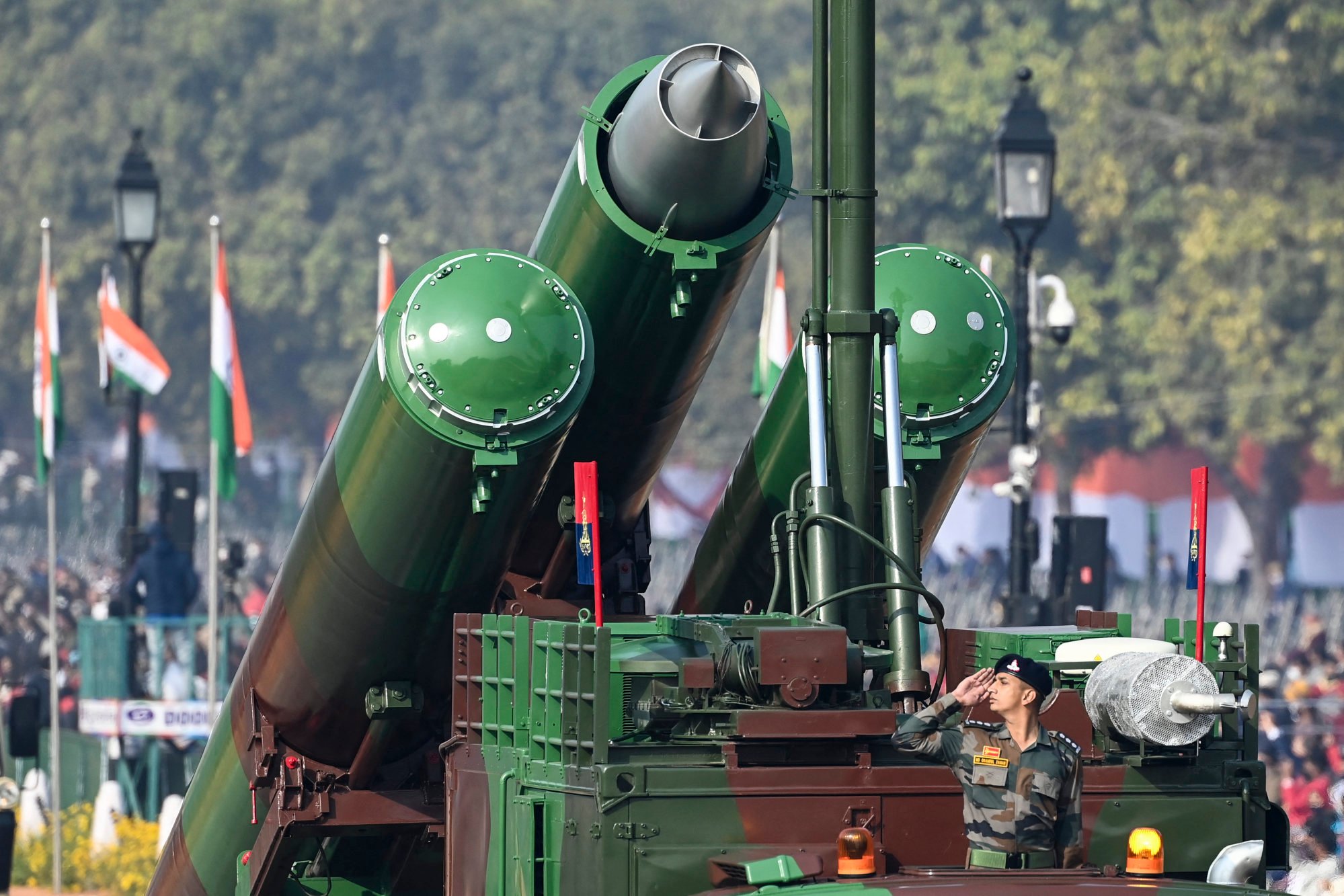India sends warships to Philippines for joint South China Sea patrol
Analysts suggest this marks a shift in India’s regional presence, extending its ‘necklace of diamonds’ strategy eastward

India’s deployment of three naval warships to the Philippines in the lead-up to a joint patrol in the South China Sea has raised hope that Manila is not alone in its long-standing stance against Beijing’s assertiveness in the region.
Currently docked at the Port of Manila, the Indian Navy warships – INS Mysore, a guided missile destroyer; INS Kiltan, an anti-submarine warfare corvette; and INS Shakti, a fleet tanker – are slated to take part in the joint sail from August 4-8, including in waters contested by Manila and Beijing.
The drill is set to coincide with a scheduled visit by Philippine President Ferdinand Marcos Jnr to India, where he and Indian Prime Minister Narendra Modi plan to hold talks. On Marcos’ itinerary during his first visit to India since assuming office are meetings with Indian President Droupadi Murmu and External Affairs Minister S. Jaishankar.
India’s 163-metre INS Mysore is equipped with BrahMos supersonic cruise missiles – jointly developed by India and Russia – with an extended range of up to 800km.
Analysts say the coordinated maritime patrol, part of India’s ongoing operational naval deployment across Southeast Asia, reflects a united front being presented by New Delhi and Manila as tensions continue to rise in the South China Sea.
At the arrival ceremony on Wednesday, Rear Admiral Susheel Menon, the flag officer commanding the Indian Navy’s Eastern Fleet, thanked the Philippine government for its warm reception. His crew introduced various surveillance aircraft to the Philippine media, highlighting their capability to accurately distinguish military vessels from civilian ships.
“We are extremely looking forward to this opportunity. Our two nations share common values and interests, particularly in the security and stability of the Indo-Pacific,” Menon said.
While in the country, the Indian Navy is also set to engage in various professional exchanges with its Philippine counterpart, reportedly aimed at strengthening interoperability and fostering closer naval cooperation.

‘Necklace of diamonds’
The deployment of Indian warships to patrol with Philippine vessels shows Delhi’s policymakers are aware that China is not a “status quo” power, security experts say.
Anita Abbott, chair of the New Zealand-based Asia-Pacific Security Innovation Forum, told This Week in Asia that India’s assertive posture signalled a shift from occasional cooperation with Manila to a more consistent regional presence.
“The South China Sea and the Indian Ocean Region are interconnected strategic theatres, especially for China. This means, by cooperating with the Philippines, India will be able to extend its reach eastward and build maritime depth, which consequently enables India to project itself as a pan-Indo-Pacific maritime power,” Abbott said.
“Moreover, by strengthening its posture in the South China Sea, India reinforces its ‘necklace of diamonds’ strategy in the Indian Ocean region,” she added, referring to Delhi’s network of alliances around the Indian Ocean and Asia-Pacific to contain China’s influence.
However, Abbott also pointed out that India still wished to avoid direct provocation of China and did not explicitly endorse Manila’s legal claims against Beijing in the South China Sea.
Unhandled type: inline-plus-widget {“type”:”inline-plus-widget”}
“There are also other ways to balance its support for the Philippines with its relationship with Beijing. For instance, by taking part in the Shanghai Cooperation Organisation,” Abbott said.
Sarang Shidore, director of the Washington-based Quincy Institute think tank’s Global South programme, said India’s approach towards China post-Galwan was undergoing an evolution, noting that significant progress had been made since the military disengagement at the border last year. Shidore was referring to the clashes between Indian and Chinese forces in the Galwan river valley in 2020.
India had also resumed visas for Chinese tourists and was considering allowing Chinese investment on a curated basis, Shidore added.
“The volatility from Washington toward its closest Asian partners is incentivising both India and the Philippines to cooperate bilaterally and regionally for balancing against China,” he told This Week in Asia.
“So both Manila and New Delhi are engaging China more, but also putting in place strategies independent of the United States on balancing against it.”
While it was difficult to predict the consistency of India’s military presence in the South China Sea, Shidore said the geopolitical alignment between Delhi and Manila was likely to endure.
The same three Indian warships made a goodwill port call in Manila last year, while the last joint naval drills between India and the Philippines took place in 2021 in the West Philippine Sea, Manila’s name for the parts of the South China Sea that it claims.
India has played a major role in Manila’s military modernisation, supplying the country with hardware such as its BrahMos anti-ship missiles.

Chris Gardiner, CEO of the Institute for Regional Security in Australia, said India was an emerging global and maritime power engaging Southeast Asia through its Act East policy, with growing economic interests in the region.
“It is a defender of international law as expressed in the United Nations Convention on the Law of the Sea. It is signalling in its current naval deployments a more proactive promotion of its interests,” he said.
“This naval deployment shows effective diplomacy by both the Modi and Marcos governments. It adds to the Philippines’ arguments about why and how its approach to defence of its sovereignty and of international law is supported beyond its alliance with the US.”
A more frequent Indian naval presence in international waters such as the South China Sea – and in Philippine waters – would be a welcome contribution to balancing and stabilising the regional maritime environment, Gardiner said.
Shidore added that even if India’s naval presence in the Philippines was occasional, it remained significant for Manila, as it signalled to Beijing that the Southeast Asian nation was strengthening a web of security partnerships with other Asian states that were concerned about China’s actions.
“But Manila will need to carefully calibrate these relations so that they help in its defence while not provoking Beijing,” he said.